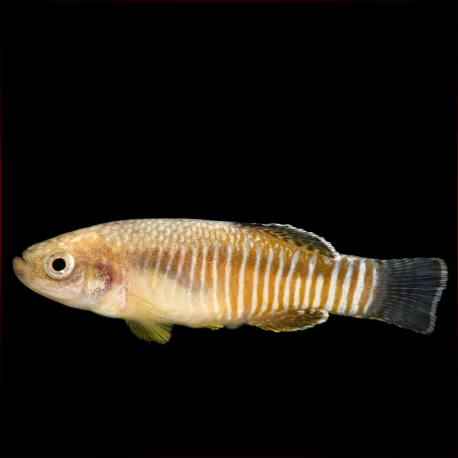More info
Datasheet
| Minimum Tank Size | 60 litres / 15.85 US gallons |
| Maximum Size | 6.0cm / 2.36inches |
| Temperature | 8°C / 46.40°F - 32°C / 89.60°F |
| Hardness | 10.03dgH / 179ppm - 30.03dgH / 536ppm |
| pH | 6.5-8.0 |
General Description
The Aphanius farsicus, previously known as A. persicus, is a member of the Cyprinodontidae family and classified under the Cyprinodontiformes order. This toothcarp species, endemic to the Lake Maharlu basin in Fars Province, southern Iran, is closely related to A. sophiae and A. isfahanensis. Known for its interesting behavior and continuous activity, it is a fascinating aquarium subject with a conservation emphasis due to its endangered status.
Aquarium Setup
To maintain A. farsicus, a minimum tank size of 60 liters is recommended. The setup should include broken lines of sight, acrylic wool mops, and filamentous algae to provide places for females to deposit eggs and for subdominant males to seek respite during the aggressive spawning season. The addition of fine-leaved plants like Java moss and marine salt in the water is essential for their well-being. Exposure to natural sunlight can enhance their colors and overall condition.
Behaviour
Due to its specific water requirements and aggressive spawning behavior, A. farsicus is not suitable for community aquariums. It is advised to keep them alone or in a group with a ratio of two or three females per male. Male individuals establish temporary territories and exhibit more intense coloration to attract females for spawning. Captive reproduction is viable, with females depositing eggs continuously from April to November.
Feeding and Diet
Being micropredators, A. farsicus feeds on small aquatic crustaceans, worms, insect larvae, and zooplankton. In captivity, they can be fed dried foods supplemented with live or frozen fare such as Artemia, Daphnia, or bloodworm. It is crucial to maintain a high-quality diet, especially during the breeding months of spring and summer, by introducing Spirulina-enriched foods if filamentous algae is lacking in the tank.
Reproduction & Dimorphism
A. farsicus exhibits reproductive adaptations to unstable environments with a short lifespan, early sexual maturity, and high reproductive effort. The species displays pronounced sexual dimorphism, with males showcasing silvery vertical bars and darker fins, while females are larger and plainer with short dark bars on their flanks. During spawning, careful monitoring is necessary as the species tend to eat their eggs and fry.
Habitat and Distribution
Endemic to the Lake Maharlu basin in southern Iran, A. farsicus occupies spring waters with clear, slow-flowing conditions. These environments have mud substrates and are framed by Phragmites and Typha reed species. The species faces endangerment due to human activities such as habitat degradation, pollution, and the introduction of non-native species like Gambusia. Periodic drying events facilitate genetic flow among populations.

